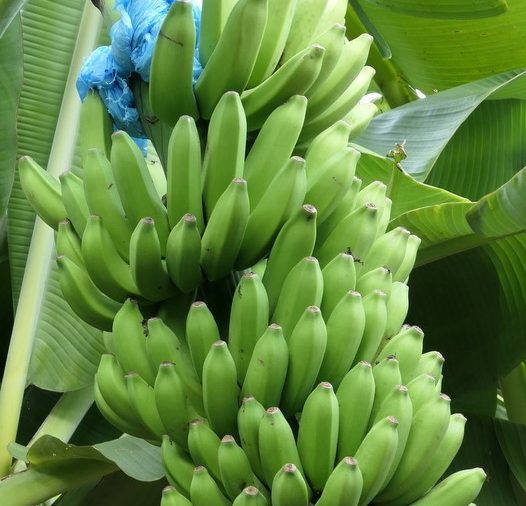Two of the better tasting selections being multiplied.
By Katie Ferro, Jeff Daniells, Massimo Bianco and Sharon Hamill, Queensland Department of Agriculture and Fisheries
The results are in and the most promising candidates have been selected for stage two of the Goldfinger Mutagenesis studies. From the original 630 irradiated plants, 20 elite variants were chosen based on their strong performance in taste-testing sessions along with favourable agronomic characteristics.
The Panama disease resistant variety Goldfinger was commercially released more than 20 years ago.
It had some initial success in the marketplace but eventually it failed commercially so far as the big supermarkets were concerned. Some blamed the lack of continuous market-end support for the fruit.
Others claimed it failed to appeal to consumers – not being able to compete with Williams or Lady Finger when it came to taste.
But with the ongoing threat of TR4 spreading further in north Queensland, disease resistant varieties are seen by many as an important part of ensuring the sustainability of the banana industry. The aim of this trial has been to take a variety like Goldfinger, with known TR4 resistance, and create variants with improved eating characteristics via gamma irradiation.
After spending the first half of 2018 examining the variation exhibited in plant and bunch characteristics, the trial plants were harvested between July and December. Fruit from each plant was ripened at the South Johnstone Research Station and the postharvest characteristics were examined. The range of characteristics measured included fruit size and shape, any abnormalities, as well as fruit sugar content (°Brix) and acidity (titratable).

Research Station answering a questionnaire to
assist with the selection of elite varieties.
Taste-testing sessions, which involved staff tasting fruit and answering a short questionnaire, were conducted at the research station. Panellists were asked to rate the overall eating experience on a standard 9-point hedonic scale, and comments were sought on the relative sweetness, tartness, firmness, creaminess and how mucilaginous (slimy/sticky texture) the samples were. They were also asked whether they would purchase the banana if it were commercially available (yes/no). In general, the variants that rated better than the standard Goldfinger controls were favoured because of their relatively firmer texture.
After combining the postharvest results with the data collected on agronomic performance, we have chosen 20 elite variants to carry onto stage two of the study. The majority of the selected variants are also different in fruit appearance to the unirradiated Goldfinger controls.
Sucker and bit material will be prepared from these selected plants after the wet season with the aim to establish 10 plants of each in the field. Material will also be sent to Sharon Hamill and her team at the Maroochy Research Facility to go back into tissue culture. Plantlets will then be sent to the Northern Territory to be screened against TR4 to ensure that the original resistance of Goldfinger has been retained.
In the middle of 2020, when the new planting of the elite Goldfinger selections has bunched, we will organise a field walk at the South Johnstone Research Station for growers to check out these new varieties along with an opportunity to taste them. For more information about the Goldfinger mutagenesis studies see Australian Bananas Vol 53 pp. 14-15 and the Better Bananas website.




